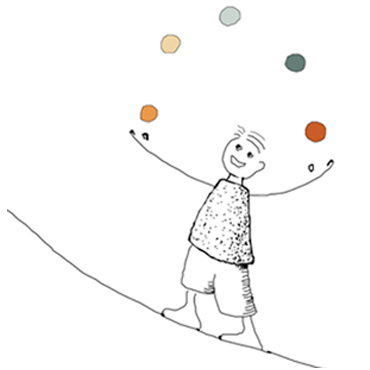Architects are often asked “What is it that you do?” Where other professions may generate straightforward reputations, the nature and value of this thing called “design” is less easy to pin down, and the role of the architect in that design more obscure still. Architects of course can be grouped in a variety of ways, but the tendency is for division by the “use” to which our offerings are put: the Product of the project, be it hospital, hotel, or office. This creates confusion more than understanding, since architects aren’t retailers of buildings.
We are trained in a Process, a “how do you do”, and offer that process to a variety of projects so that excellent and meaningful solutions result. The relationships that a project supports are more complex than at first glance. Our society’s division of the world into discrete boxes, and building those boxes single-mindedly, risks the loss of the profession’s real value and is detrimental to the quality of our built realm.
Let’s look more closely, using a familiar example: house. Although architects are involved in a small percentage of residential projects, and tract housing hardly at all, “residential architect” is one of the profession’s labels. But what is a house if not at times a hotel, part restaurant, an entertainment venue, certainly a gallery for our memories and dreams, a refuge, a retirement savings plan, a consumer of resources and producer of wastes, an office, shop, and much more besides? Far from being simple, the house is the most complex of designs, with far-reaching consequences for the quality of our lives and our community’s future. “Ready-to-wear” solutions from the marketplace, from which we form our perceptions of “house”, only hint at what design can truly do.
So then what is it to design? Well, there are critical ideas that distinguish it from other processes of making. The most important ideas seem simplest, yet are misunderstood: first, that design addresses the relationship among things, rather than the things themselves; and second, that the appropriate solution is specific to the particular project, and is not known at its outset.
Designers are jugglers of a peculiar kind. Before design we identify and explore many disparate “things” to be balanced. Here’s a list of some: activities (office work, exercise, greetings, meetings, etc); sequences (first greet, then meet); schedule; available resources; a site and its peculiarities; gravity and its consequences; climate; safety; legislative rules; beauty; and more. Understanding gravity doesn’t give us a design for the project. It’s one item among many, however unavoidable.
So the things are not the design, nor is the project’s use (“hotel”) nor its materials (“expensive marble from Italy”.) They are elements that need to be treated in a particular way.
The design is the pattern of relationships among those things. The possible relationships are many, but only some are successful. Fewer are elegant and beautiful. Thus the juggling analogy. Having identified the “things” that are involved in the project, design is a process of handling them (in accordance with their needs and rules) for best relation.
Here’s the key part of this first idea: design is about relationships, not things. Imagine you are handling a chainsaw and beach ball. Each has features and some rules to be respected (if you’d like to keep your hand intact). Juggling them requires attention to both, but you might just hold one in each hand. Done. Cue the applause.
Now let’s add two other things, a bowling pin and a live fish. Notice what happened to the beach ball? Instead of holding it, now it has to be bopped up and down on your forehead. AND THAT’S THE KEY. Solutions that pay attention to one or two things are not designs. They externalize (ie. ignore) very real issues and avoid complex relationships. Good designs successfully balance all sorts of things. This requires an openness that is too often missing as we construct our future (even among designers), but is the only way it will be richer rather than poorer.
This leads to the second idea: that successful designs emerge from project process, rather than controlling it in the name of predictability. Forcing each project into the same juggling pattern is poor design. It doesn’t respect unique relationships that must be found among changing and often competing issues. The excellent solution is not known at project outset. It is the result of an excellent process: one that identifies the issues, assesses the priorities by which the design will be judged, and gives time for solutions to emerge.
Good design does not ignore the disparate things that need to be balanced, as happens so often for our buildings, lives, and planet. It creates a pattern that ensures quality relationships among the issues we are handling, and forces us to see these issues in relation, not in isolation.
How do you view or understand Design?
Despite our rare participation in projects (architects are involved in only about 5% of construction activity in Ontario), architects have something of value to offer in an uncertain and changing world. Our method generates quality longterm solutions that balance diverse things. Other working methods that advocate the self-interest of the pieces or ignore their relations, or that reduce our world to short-term sums of lowest common denominators, hold little hope for a sustainable planet that must do more with less.




